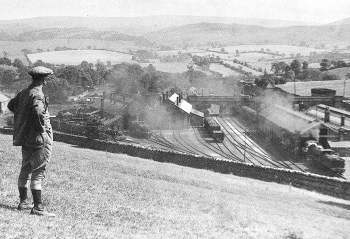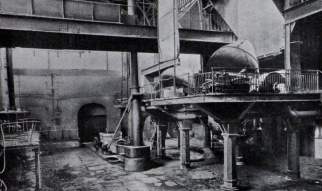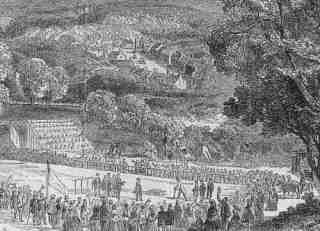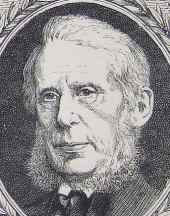 The history of the construction of our railways during the nineteenth century is a long and complex story. However there are many common underlying themes to be discovered in the ways by which the network developed, and many of the entrepreneurs, engineers and contractors involved in the early years of the industry continued to make long and often profitable careers working on the construction of new lines.
The history of the construction of our railways during the nineteenth century is a long and complex story. However there are many common underlying themes to be discovered in the ways by which the network developed, and many of the entrepreneurs, engineers and contractors involved in the early years of the industry continued to make long and often profitable careers working on the construction of new lines. The eventual impetus for the construction of a line through the Stainmore gap came from a rather different direction. In 1850 vast reserves of iron ore were discovered at Eston in Cleveland by the industrialist Henry Bolckow, close to the port site being developed by Joseph Pease and his partners. Within a few years the south bank of the Tees in the Middlesbrough area became a major international centre for the iron trade. At about the same time Henry Bessemer's steel-making process was being introduced, but this required hæmatite ores of the kind that outcropped in Furness and in west Cumberland. On the west coast the local iron industry demanded supplies of quality coke already being supplied from east Durham by the circuitous railway route via Newcastle and Carlisle. There was also the possibility of coal exports to Ireland. The directors of the Stockton and Darlington Railway, many of whom were also heavily involved in steel and coal themselves, saw a major business opportunity if a line could be built from West Auckland to join the Barnard Castle railway and then west via the Stainmore gap to connect with the Lancaster and Carlisle Railway.
The eventual impetus for the construction of a line through the Stainmore gap came from a rather different direction. In 1850 vast reserves of iron ore were discovered at Eston in Cleveland by the industrialist Henry Bolckow, close to the port site being developed by Joseph Pease and his partners. Within a few years the south bank of the Tees in the Middlesbrough area became a major international centre for the iron trade. At about the same time Henry Bessemer's steel-making process was being introduced, but this required hæmatite ores of the kind that outcropped in Furness and in west Cumberland. On the west coast the local iron industry demanded supplies of quality coke already being supplied from east Durham by the circuitous railway route via Newcastle and Carlisle. There was also the possibility of coal exports to Ireland. The directors of the Stockton and Darlington Railway, many of whom were also heavily involved in steel and coal themselves, saw a major business opportunity if a line could be built from West Auckland to join the Barnard Castle railway and then west via the Stainmore gap to connect with the Lancaster and Carlisle Railway. Although the scheme was fostered and encouraged behind the scenes by powerful industrialists in the North East such as Pease, the practical side of the promotion and management of the new railway project was led by local interests. The Stockton and Darlington Railway, always wary of the danger of competitors trying to gain entry to Durham through such a scheme, contracted in advance to take over the operation of the route when it was built. The promoters followed the common contemporary practice of floating a separate company with strong local roots to manage the construction of the railway. The South Durham and Lancashire Union Railway Company Bill was promoted in November 1856 and received the Royal assent on 13 July 1857 authorising a new railway from the Stockton and Darlington Lands Colliery branch near Bishop Auckland to a junction with the Lancaster and Carlisle Railway at Tebay.
Although the scheme was fostered and encouraged behind the scenes by powerful industrialists in the North East such as Pease, the practical side of the promotion and management of the new railway project was led by local interests. The Stockton and Darlington Railway, always wary of the danger of competitors trying to gain entry to Durham through such a scheme, contracted in advance to take over the operation of the route when it was built. The promoters followed the common contemporary practice of floating a separate company with strong local roots to manage the construction of the railway. The South Durham and Lancashire Union Railway Company Bill was promoted in November 1856 and received the Royal assent on 13 July 1857 authorising a new railway from the Stockton and Darlington Lands Colliery branch near Bishop Auckland to a junction with the Lancaster and Carlisle Railway at Tebay.

Joseph Pease was a member of the well known Darlington Quaker family that became closely involved with the development of both railways and industry in the region. His father Edward was a friend of the prison reformer Elizabeth Fry and the driving force behind the construction of the original Stockton and Darlington Railway. After 1829 Joseph took over responsibility for the management of the Company.
He also acquired or developed many mines in the Durham coalfield. His interest in shipping coal from these mines to British and overseas customers led him to look for opportunities to develop a new port in the region. In 1830 in partnership with other Quaker businessmen he bought a large tract of land on which the port and town of Middlesbrough was later developed.
In 1832 Joseph Pease became the first Quaker Member of Parliament. A man of strong principle, for some time he was unable to take his seat at Westminster until a committee of the House of Commons accepted that it was acceptable for him to affirm his loyalty rather than swear an oath which was contrary to Quaker belief.
Joseph was a formidable entrepreneur and a powerful business strategist. He was undoubtedly the mastermind behind the development and implementation of many regional infrastructure projects including the Stainmore line.
In his later life he became involved in promoting Quaker beliefs in non-violence. He served as President of the Peace Society from 1860 until his death in 1872